6 Amazing Examples Of The Scarred Earth
By: Kratika Thu, 24 Feb 2022 9:21:26
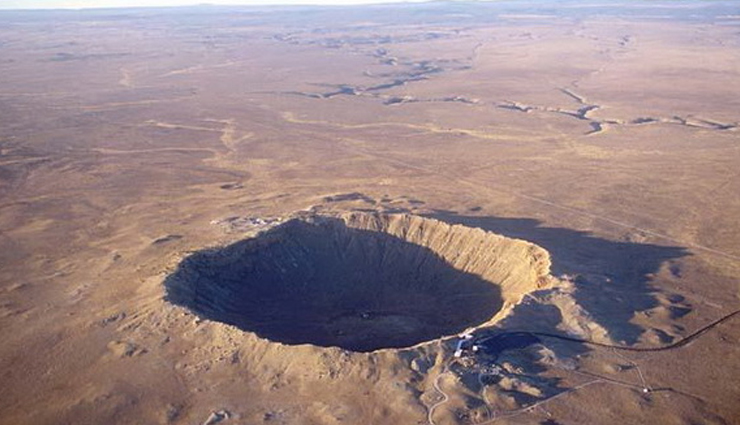
Our planet is covered in pockmarks so deep that they can be seen from space. Some were caused by asteroid strikes, but most are the result of human meddling. Here are some of the most incredible examples of the scarred Earth
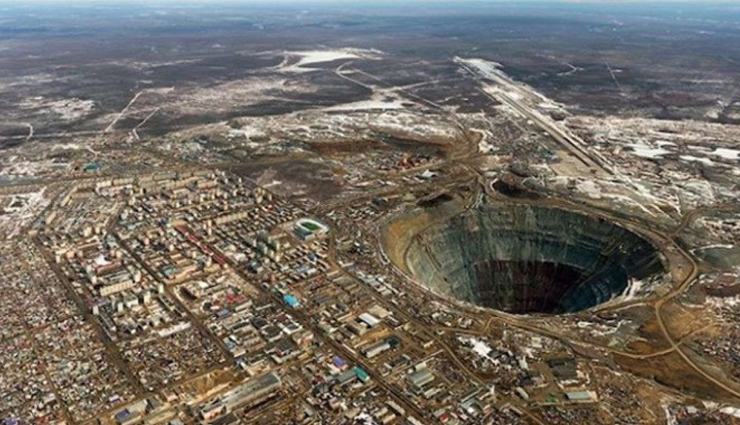
# Mir Mine, Russia
Mir Mine also called Mirny Mine is a former open pit diamond mine, now inactive, located in Mirny, Eastern Siberia, Russia. The mine is 525 meters (1,722 ft) deep (4th in the world) and has a diameter of 1,200 m (3,900 ft), and is the second largest excavated hole in the world, after Bingham Canyon Mine. The airspace above the mine is closed for helicopters because of incidents in which they were sucked in by the downward air flow.
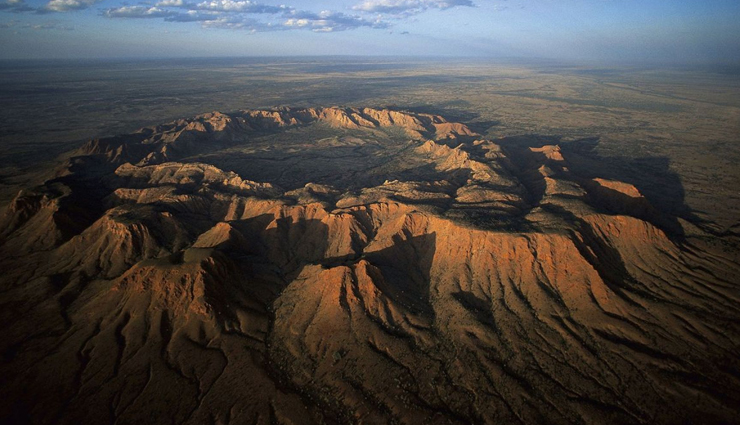
# Gosses Bluff Crater, Australia
Gosses Bluff (Gosse's Bluff) is thought to be the eroded remnant of an impact crater. It is located in the southern Northern Territory, near the centre of Australia, about 175 km (109 mi) west of Alice Springs and about 212 km (132 mi) to the northeast of Uluru (Ayers Rock). It was named by Ernest Giles in 1872 after Australian explorer William Gosse's brother Henry, who was a member of William's expedition. The original crater rim has been estimated at about 22 km (14 mi) in diameter, but this has been eroded away. The 5 km (3.1 mi) diameter, 180 m (590 ft) high crater-like feature, now exposed, is interpreted as the eroded relic of the crater's central uplift.
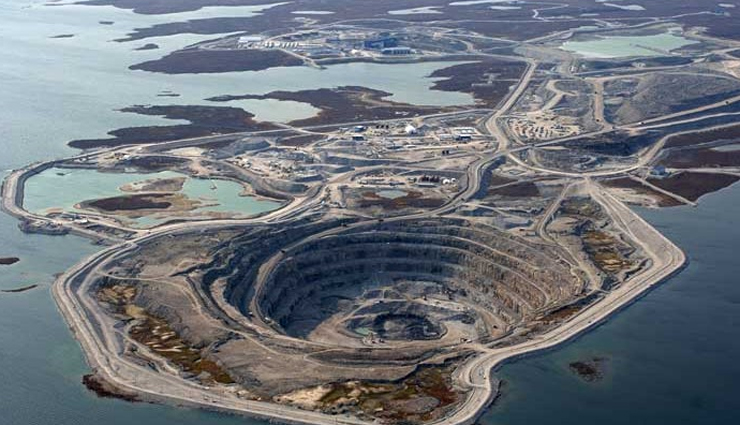
# Diavik Diamond Mine, Canada
The Diavik Diamond Mine is a diamond mine in the North Slave Region of the Northwest Territories, Canada, about 300 kilometres (190 mi) north of Yellowknife. It has become an important part of the regional economy, employing 700, grossing C$100 million in sales, and producing approximately 7.5 million carats (1,500 kg (3,300 lb)) of diamonds annually. The area was surveyed in 1992 and construction began in 2001, with production commencing in January 2003. It is connected by an ice road and Diavik Airport with a 5,235 ft (1,596 m) gravel runway regularly accommodating Boeing 737 jet aircraft.
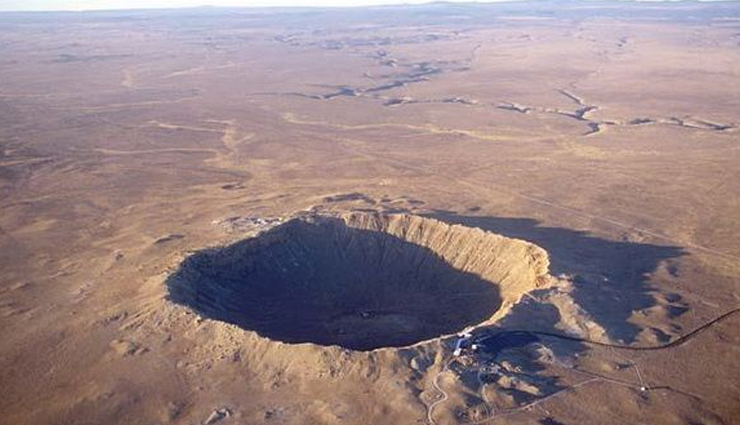
# Meteor Crater, USA
Meteor Crater is a meteorite impact crater approximately 43 miles (69 km) east of Flagstaff, near Winslow in the northern Arizona desert of the United States. Because the United States Board on Geographic Names commonly recognizes names of natural features derived from the nearest post office, the feature acquired the name of "Meteor Crater" from the nearby post office named Meteor. It is about 1,200 m (3,900 ft) in diameter, some 170 m deep (570 ft), and is surrounded by a rim that rises 45 m (148 ft) above the surrounding plains. The center of the crater is filled with 210–240 m (690-790 ft) of rubble lying above crater bedrock. One of the interesting features of the crater is its squared-off outline, believed to be caused by pre-existing regional jointing (cracks) in the strata at the impact site.
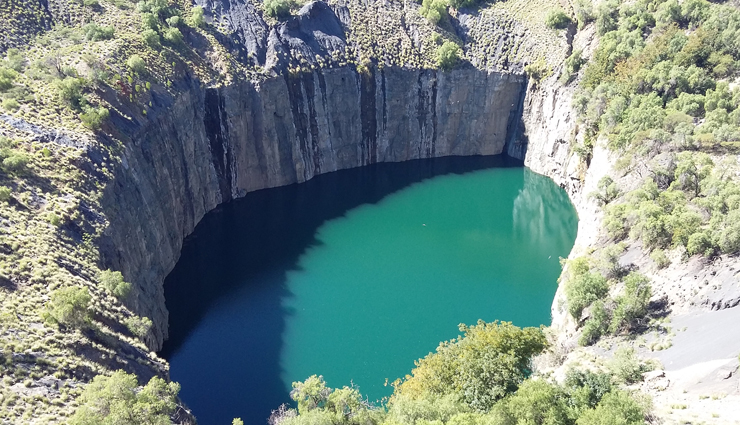
# Kimberley Big Hole, South Africa
Kimberley (city) is the home of De Beers Consolidated Diamond Mines, some of the world's richest diamond mines, and it is still considered to be the capital of the world's diamond industry. As the centre for the diamond fever of the late 19th century, its foundations began to be dug in 1871 when a diamond was found on a small hill called Colesberg Koppie. Digging began and only a few months later more than 30 000 men were frantically excavating for diamonds in an area covering 300m (980ft) by 200m (660ft).
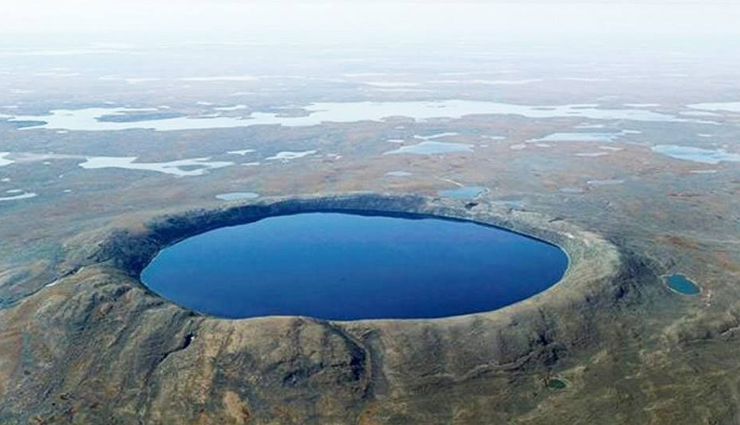
# Pingualuit Crater, Canada
The Pingualuit Crater (Inuktitut: "where the land rises") is located in the Ungava Peninsula of Quebec, Canada. It is 3.44 km (2.14 mi) in diameter. The crater is exposed to the surface, rising 160 m (520 ft) above the surrounding tundra and is 400 m (1,300 ft) deep. A 267 m (876 ft) deep Pingualuk Lake fills the depression, and is one of the deepest lakes in North America. The lake also holds some of the purest fresh water in the world. The lake has no inlets or apparent outlets, so the water accumulates solely from rain and snow and is only lost through evaporation. In terms of transparency, it is one of most transparent lakes in the world, with Secchi disk visible more than 35 m (115 ft) deep.





